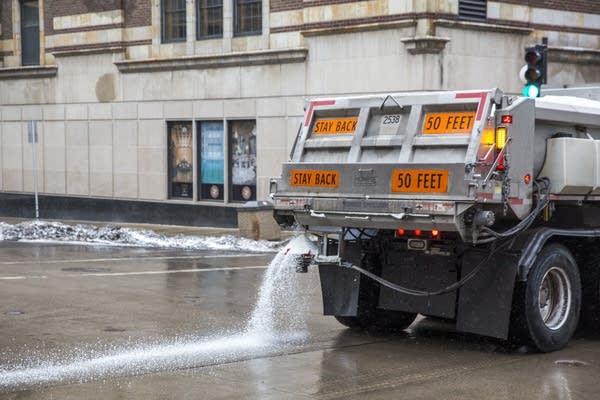Hold the salt: 67 Minnesota waterways now 'impaired' due to chloride

A snow plow lays down road salt in downtown St. Paul, Minn.
Evan Frost | MPR News
Go Deeper.
Create an account or log in to save stories.
Like this?
Thanks for liking this story! We have added it to a list of your favorite stories.


